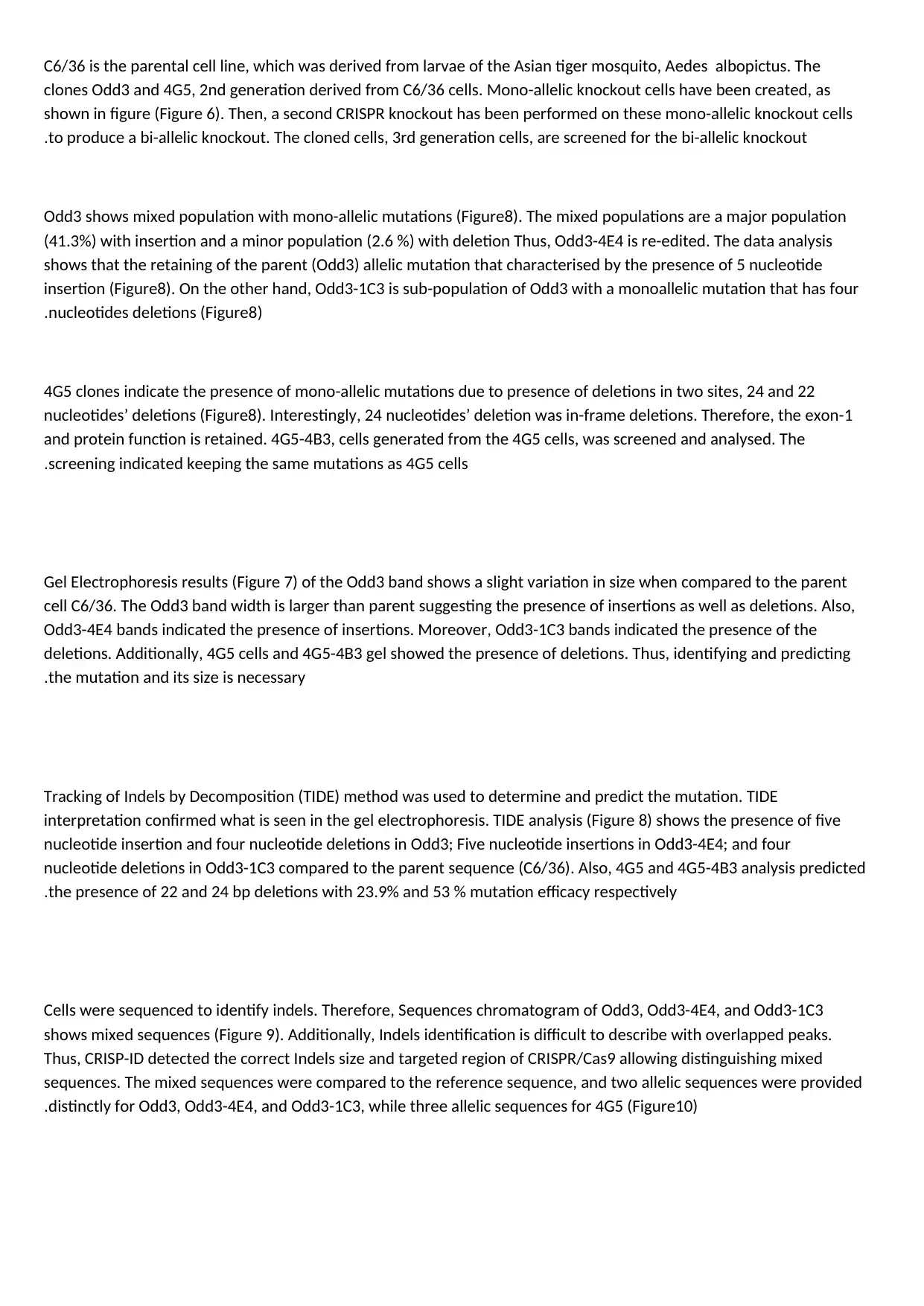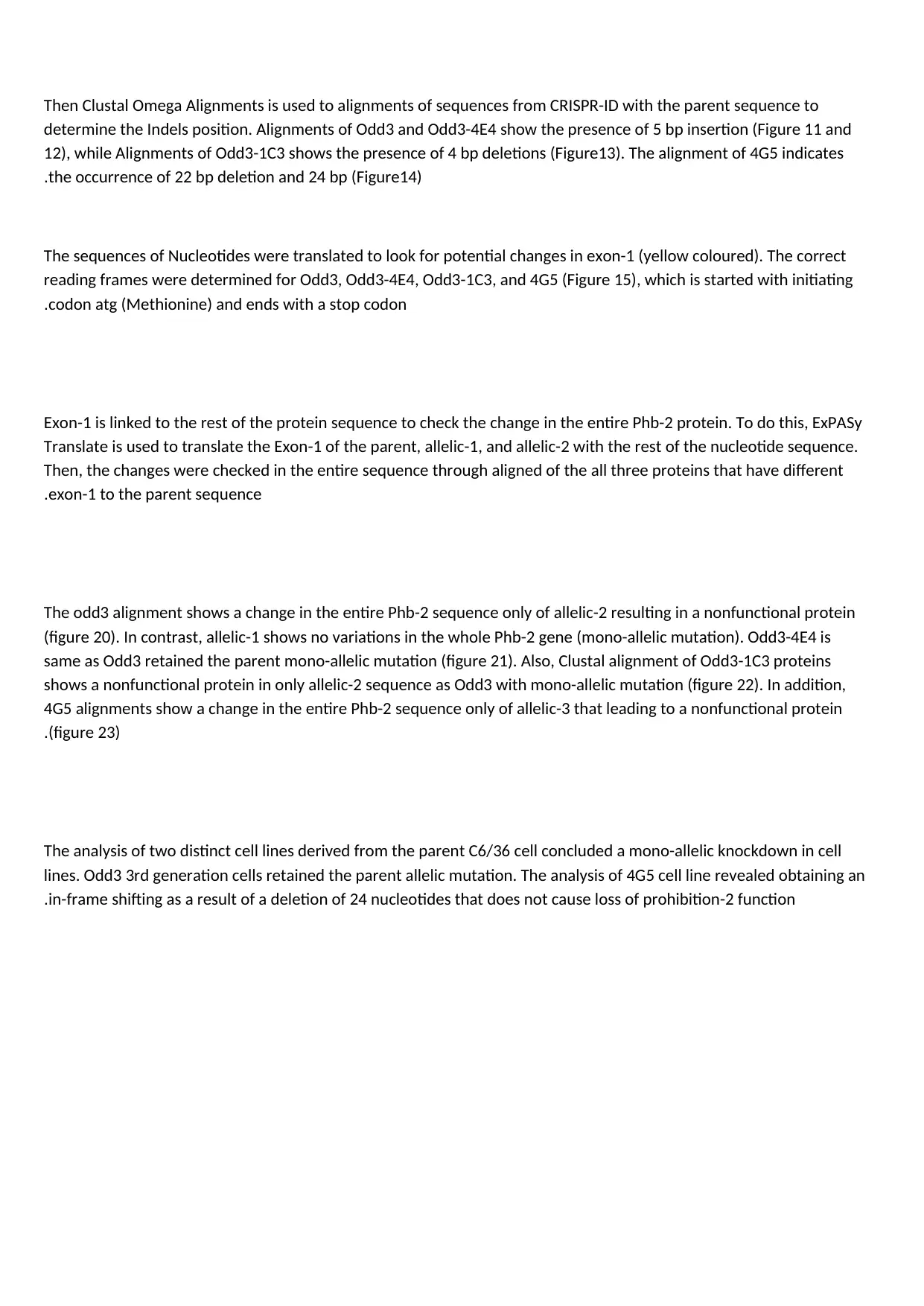Analysis of Phb-2 Gene Mutations in CRISPR-Edited Cell Lines
VerifiedAdded on 2019/10/18
|2
|895
|630
Practical Assignment
AI Summary
This assignment presents an analysis of CRISPR-edited cell lines derived from Aedes albopictus, focusing on mutations in the Phb-2 gene. The study examines the C6/36 parental cell line and its derived clones, Odd3 and 4G5, which underwent mono-allelic and bi-allelic knockout procedures using CRISPR-Cas9 technology. The analysis includes gel electrophoresis, TIDE analysis, and sequencing to identify indels, with CRISP-ID used to distinguish mixed sequences. Clustal Omega alignments are used to determine the position of indels. The study investigates the impact of these mutations on the Phb-2 protein function through ExPASy Translate and alignment, revealing both functional and nonfunctional protein variants resulting from the gene editing. The findings demonstrate the creation of mono-allelic knockdown in the cell lines, with specific mutations leading to in-frame shifts that do not cause loss of the Phb-2 function.
1 out of 2




![[object Object]](/_next/static/media/star-bottom.7253800d.svg)